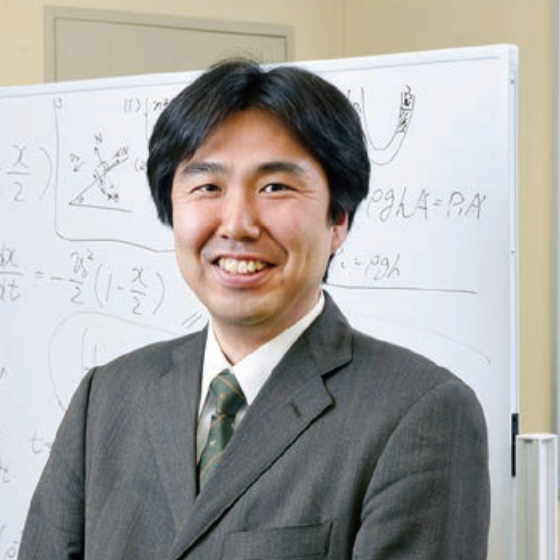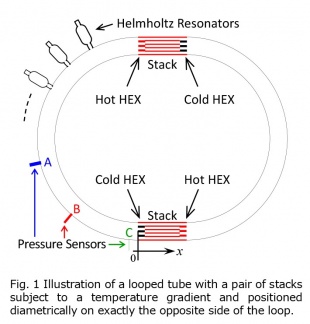- Home
- Faculty Members
- Department of Mechanical Engineering
- Dai Shimizu
Faculty of Engineering
Department of Mechanical Engineering
- Key words
- Thermoacoustic phenomena, Self-excited oscillations, Shock waves, Solitary waves, Helmholtz resonator, Energy cascade, Nonlinear waves

Ph.D. in Engineering / Professor
Dai Shimizu
Education
Department of Mechanical Science, School of Engineering Science, Osaka University,
Department of Mechanical Science and Bioengineering, Graduate School of Engineering
Science, Osaka University (Doctoral Program)
Professional Background
Associate consultant, Hewlett-Packard Japan Ltd.,
Specially appointed assistant professor, Assistant professor, Osaka University,
Associate professor, Professor, Fukui University of Technology
Consultations, Lectures, and Collaborative Research Themes
Lectures on thermoacoustic phenomena,
Consultations on nonlinear wave motion
Main research themes and their characteristics
「Amplification of thermoacoustic oscillations by connecting Helmholtz resonators」
Thermoacoustic phenomena have attracted much attention over the past few decades in view of potential applicability to novel heat engines or refrigerators. Thermoacoustic oscillations of a gas in a straight tube or in a looped tube occur spontaneously by the use of so-called stack of many squared pores sandwiched by hot and cold heat exchangers imposing a steep temperature gradient. In thermoacoustic oscillations, nonlinearity gives rise to higher harmonics of fundamental oscillations so that energy cascade takes place. This cascade becomes prominent, as the pressure amplitude of the oscillations grows, and it tends to distort the pressure profile and to suppress increase in maximum amplitude. To avoid these and to generate oscillations of higher amplitude, we propose connecting Helmholtz resonators locally. For nonlinear thermoacoustic oscillations in a straight and closed tube filled with atmospheric air, effects of the Helmholtz resonators are studied experimentally. Changing the location of the stack along the tube, an optimum position is identified for the maximum pressure to be obtained at the closed end. It is then observed that the pressure profile is distorted by the generation of many harmonics, and the crest becomes high and sharp whereas the trough becomes low and flat. However, by connecting the Helmholtz resonators near the middle of the tube so as to annihilate the second harmonics, the pressure profile resumes sinusoidal and the peak-to-peak value of the excess pressure at the closed end is increased considerably relative to the one in the case without connecting the resonators. These experimental results suggest effectiveness of connecting the resonators to generate oscillations in higher pressure level.
「Autonomous generation of a thermoacoustic solitary wave」
Experiments are performed to demonstrate the autonomous generation of an acoustic solitary wave in an air-filled, looped tube with an array of Helmholtz resonators. The solitary wave is generated spontaneously due to thermoacoustic instability by a pair of stacks installed in the tube and subject to a temperature gradient axially. No external drivers are used to create initial disturbances. Once the solitary wave is generated, it keeps on propagating to circulate along the loop endlessly. The stacks, which are made of ceramics and of many pores of square cross section, are placed in the tube diametrically on exactly the opposite side of the loop, and they are sandwiched by hot and cold (ambient) heat exchangers (Fig. 1). When the temperature gradient along both stacks is appropriate, pulses of smooth profiles are generated and propagated in both directions of the tube at subsonic speed (Fig. 2). From good agreements of not only the pressure profile measured but also the propagation speed with the theory, the pulse is identified as the acoustic solitary wave, and it can be called thermoacoustic solitary wave or thermoacoustic soliton corresponding to the soliton solution of the K-dV equation in one limit.
Major academic publications
Dai Shimizu and Nobumasa Sugimoto, “Autonomous generation of a thermoacoustic solitary wave in an air-filled tube,”
Journal of Applied Physics, 120 (2016) 144901 1-6.
Dai Shimizu and Nobumasa Sugimoto, “Determination of Marginal Conditions for Thermoacoustic Oscillations in a Looped Tube by Evolution of an Initial Disturbance Based on the Boundary-Layer Theory,”
Journal of the Physical Society of Japan, 83 (2014) 034403 1-9.
Dai Shimizu and Nobumasa Sugimoto, “Numerical study of thermoacoustic Taconis oscillations,”
Journal of Applied Physics, 107 (2010) 034910 1-11.
Dai Shimizu and Nobumasa Sugimoto, “Physical Mechanisms of Thermoacoustic Taconis Oscillations,”
Journal of the Physical Society of Japan, 78 (2009) 094401 1-6.


